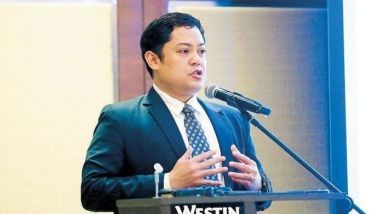NEDA upbeat on meeting growth targets
MANILA, Philippines — The National Economic and Development Authority remains upbeat the country will meet growth targets this year, despite inflationary pressures, a slowdown in global demand and tight fiscal space, with consumption and investments seen to drive the economy forward.
Socioeconomic Planning Secretary Arsenio Balisacan affirmed his optimism in achieving the country’s 2022 growth targets during the Fellows Meeting of the Foundation for Economic Freedom.
Balisacan said domestic consumption and investment on the demand side, as well as the services sector on the supply side, have propelled the Philippine economy, with consumers and businesses now adjusting their economic decisions and expectations to the new normal.
“The most recent data show us that household consumption contributes a significant 85 percent of economic growth on the demand side, while the services sector contributes about 67 percent to growth on the supply side. Both components are growing faster than the overall economy, indicating that their shares in GDP (gross domestic product) are expected to increase further,” he said.
For the economy to achieve the lower bound of the 6.5 to 7.5 percent growth target set by the Development Budget Coordination Committee for the year, it needs to expand by at least 5.3 percent in the second half, Balisacan said.
In the first semester, the economy grew by 7.8 percent.
Based on data from the Philippine Statistics Authority, household consumption growth rose to 8.6 percent in the second quarter, bringing the average growth to 9.3 percent in the first semester.
Investments grew by an average of 12.6 percent in the first half.
Aside from consumption and investments, Balisacan said the country has also seen improvements in the employment rate, with about 1.5 million additional Filipinos employed in June this year compared to last year.
Amid the country’s economic reopening, he said the unemployment rate also fell to six percent in June from 7.7 percent in the same month a year ago.
“With the reopening of the economy, buoyed investment confidence, the return of domestic and foreign tourism, as well as greater SME (small and medium enterprise) activities induced by face-to-face classes in the new normal, prospects for growth in the near term appear bright,” he said.
While there are risks such as commodity prices likely staying elevated due to trade disruptions brought by geopolitical conflicts and a slowdown in demand from other economies, Balisacan said these would be managed through the eight-point socioeconomic agenda, which has strategies focused on both short-term and medium-term issues to sustain the country’s economic growth.
In particular, the government’s eight-point agenda will seek to address high inflation and scarring from the pandemic in the short-term, and the binding constraints to job creation in the medium term.
Given limited fiscal space, the government is also looking at the greater utilization of public-private partnerships to promote investments in infrastructure, specifically in energy, transportation and logistics, water, and telecommunications.
Through these investments, Balisacan said the country would be able to capitalize on the demographic dividend as the country’s working-age population has grown faster than the total population in recent years.
“Through investment, the country can equip this growing segment of the population with the sufficient tools and infrastructure that will greatly raise its productivity,” he said.
- Latest
- Trending




























